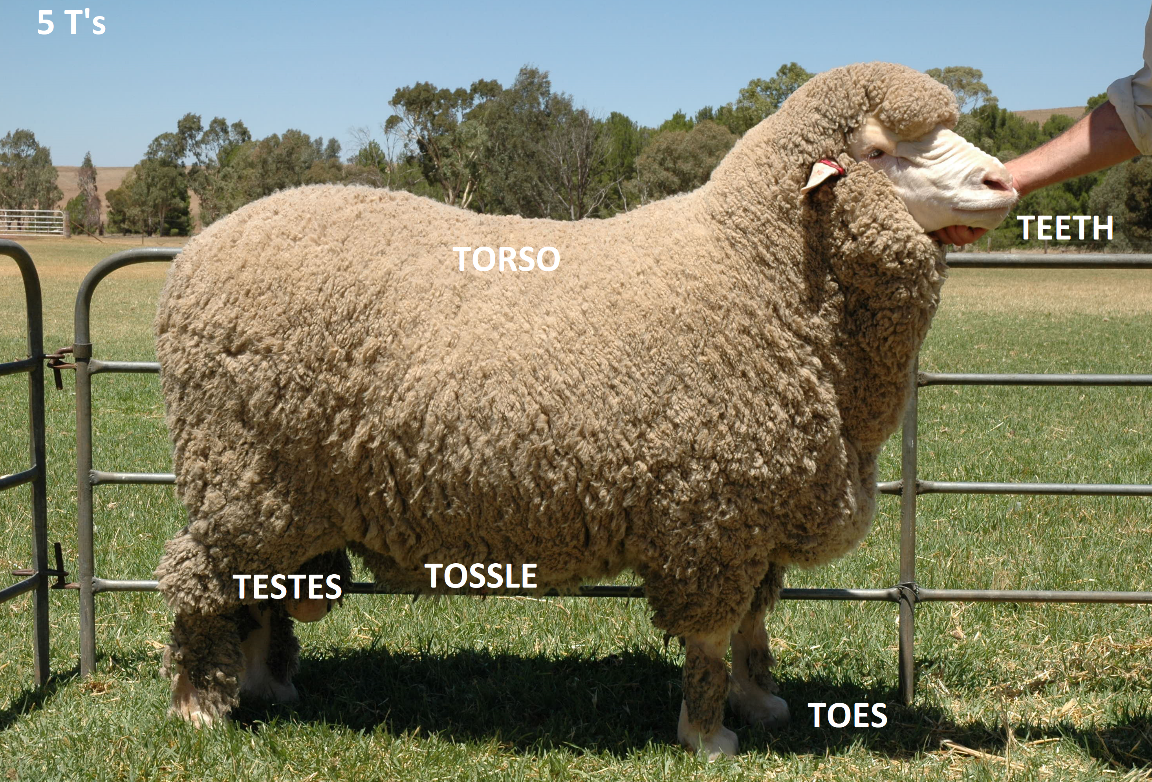Buying bulls and rams: Check the five T's
By Livestock Officer Dr Sue Street, April 2020
With some good rain in the past few months, many sheep and beef producers are looking to buy rams and bulls to help rebuild their flocks and herds. It’s really important to do some homework before purchase from both a physical or genetic view and also in terms of a biosecurity risk (see Dr Georgia Grimond’s article on reducing the risk when restocking below).
Genetics is an important aspect to consider when buying in sires. Genetic improvement is a major factor contributing to the profitability of production systems for livestock. Breeding and selection have resulted in significant economic gains in beef, lamb, wool and milk production (NSW DPI). Estimated Breeding Values (EBV), or Australian Sheep Breeding Values (ASBV), are selection tools that are available to help you choose the right genetics for your flock/herd. These values provide an indication of the potential breeding values of different animals (Sheep Genetics – Australia).
In the absence of the availability of EBV’s and/or ASBVs, some simple questions and an understanding of how to interpret measurements can help with the selection of the best sires for the job.
When buying in sires, if possible try and view or get someone you trust to view the animal such as the Australian Cattle Veterinarians, who have a Bull Breeding Soundness Evaluation scheme, and for sheep, your sheep classer would be a great person to do this. Visual assessment will be difficult due to the current restrictions, but it is important so you can visually assess the animal and get what you payed for. The best aspects to look for are conformation and we can do this by doing the 5 T’s.

The 5T’s are as follows:
- Teeth – can he eat properly? What is his age? Broken mouthed animals or animals with poorly aligned teeth should be culled because they will be less able to eat sufficient feed to maintain weight
- Toes – Can he walk properly? Are his hooves overgrown? Is he lame? Does he track properly? Is there any swelling? Having sound sires is essential for optimal performance as his toes and legs are what get him around and support him during mating.
- Torso – are they in good condition? If not, do you have enough time to get condition on them before joining? BCS 3.5 is the optimal body condition score for joining (NSW DPI).
- Tossle – Check the prepuce for swelling or for any abnormal discharge. The penis can also be extruded and checked for scabs, ulcers or deviations.
- Testicles – Are they uniform in size? Optimum is >28cm for rams and >35cm for bulls (NSW DPI). Are there two? Check to make sure there are no lumps or bumps on the testicles or on the epididymis. The testicles should be firm, resilient to touch, free moving and uniform in size.
Checking animals before buying and/or asking some relevant questions will reduce the chances of taking home any surprises.
For further information contact your livestock officer, vet or Ag team member.
References/Resources:
CWLLS: Reducing the risks when re-stocking https://www.lls.nsw.gov.au/regions/central-west/articles-and-publications/livestock-production/reducing-the-risks-when-re-stocking
Sheep Genetics: http://www.sheepgenetics.org.au/Home
The Australian Cattle Veterinarians: Bull Breeding Soundness Evaluation scheme https://www.ava.com.au/about-us/ava-groups/cattle/resources/schemes/bullcheck/
NSW DPI: Fertility testing of Rams https://www.dpi.nsw.gov.au/__data/assets/pdf_file/0010/179785/fertility-test-rams.pdf
NSW DPI: Bull Soundness https://www.dpi.nsw.gov.au/animals-and-livestock/beef-cattle/breeding/bull-selection/reproductive-soundness
AWI: Ramping Up Repro: https://www.wool.com/people/education-and-leadership/practical-workshops/
Sheep connect: Ramping Up Repro webinar https://www.sheepconnectnsw.com.au/tools/
AWI and MLA: Making More from Sheep http://www.makingmorefromsheep.com.au/
MLA: Bred Well Fed Well https://www.mla.com.au/extension-training-and-tools/Bred-Well-Fed-Well/